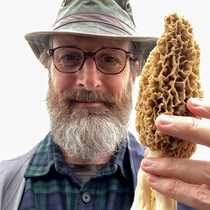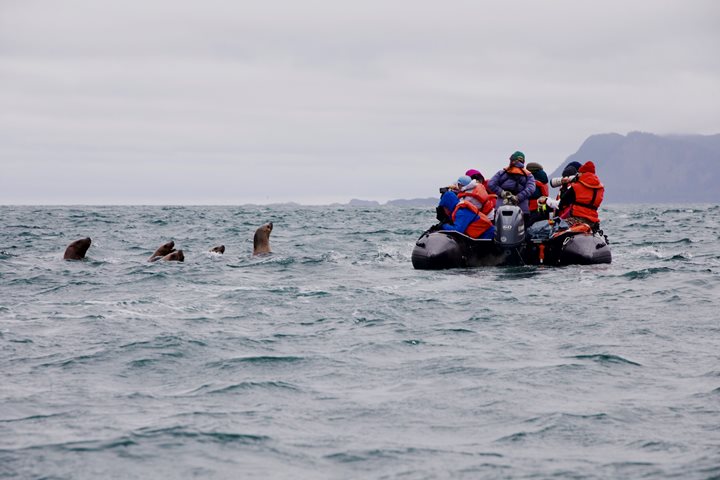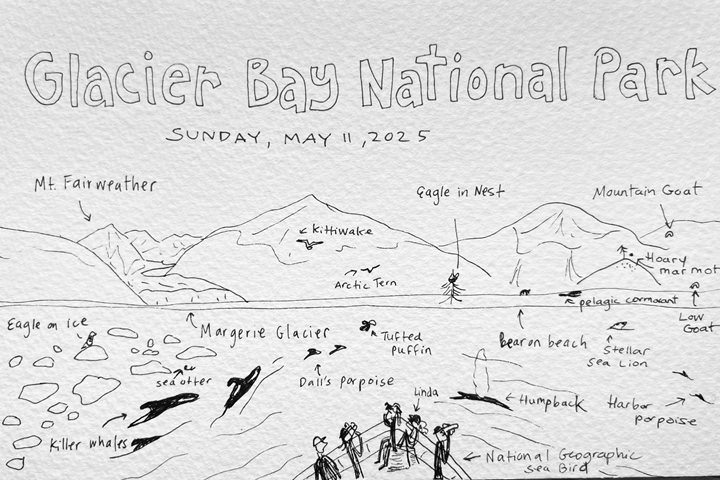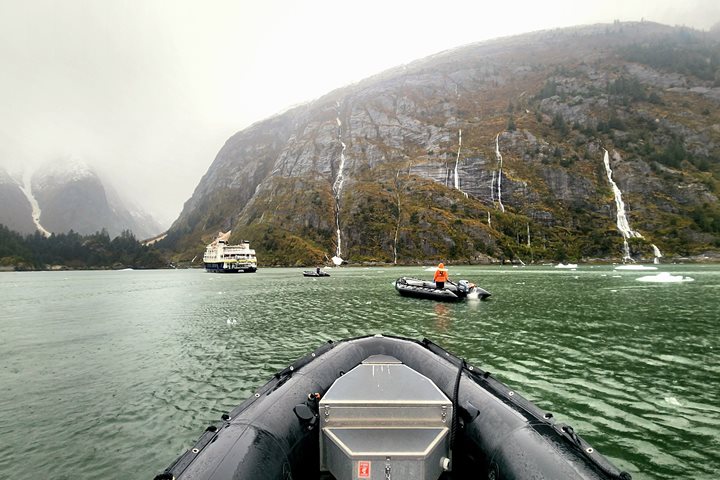We were only a few minutes down the trail on Kupreanof Island when we found ourselves stepping just off the trail. Some stooped, others knelt, a couple took a step back and used binoculars to focus on the tiny little cups growing along the downed log paralleling our path. Ranging from a pencil lead to a pencil in diameter, these little mushrooms are commonly called bird’s nest fungi for the tiny, egg-like, spore-producing bodies in the bottom of the cups. Since all the spores had long since been released, leaving behind empty cups that more closely resemble tiny chalices than bird nests, and because we liked the mystical connotation of it, we unanimously chose to call them by their other common name: fairy cups. Of course, we took their presence to be absolute and incontrovertible evidence that fairies must live in this forest and use these perfect little vessels for scooping up and drinking dewdrops.
It was with this mindset that we continued down the trail, and it was not long before we discovered more evidence that magical beings inhabit these Alaskan island woods. Tiarella trifoliata—tiny tiaras with three leaves—grew along the trail to provide dainty little headwear for fairy princesses. Butterfly-shaped leaves of salmon berries could only serve to provide magical wings for sprites, and the presence of dwarf dogwood everywhere we looked has long been known to grow in the homes of brownies—ancient wee folk who perform mischievous nocturnal deeds in service of the unsuspecting humans living in their midst.
Unfortunately, we had to return to the ship before seeing the fairies themselves, but by the time we finished our hike, we had gathered enough proof that there was nary an unbeliever among us.







